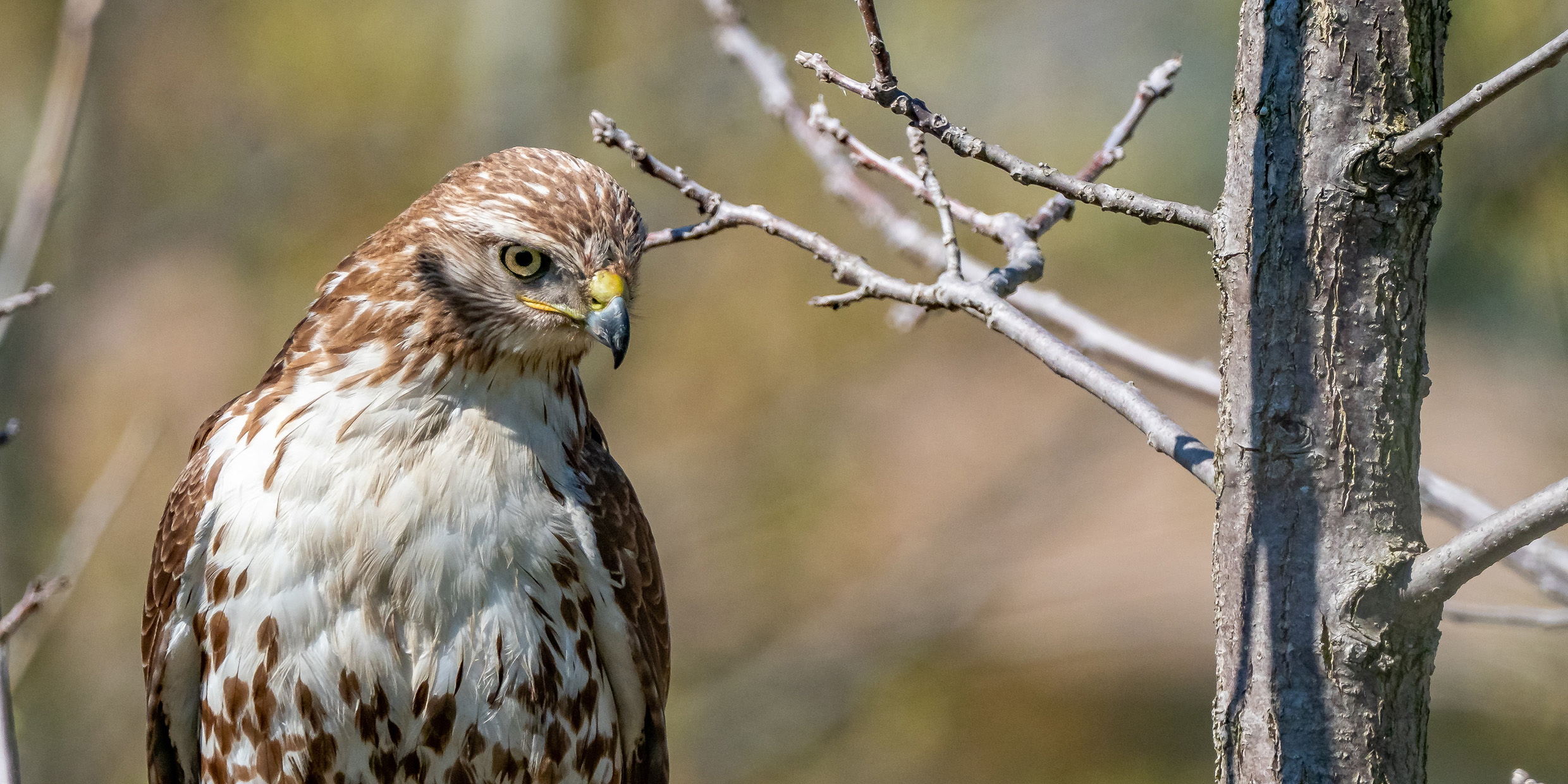Originally published 18 July 2004
Was up Mount Brandon yesterday, Ireland’s second highest mountain, with my friend Maurice. A temperature inversion held the clouds close to the earth, with just the peaks rising above. An island archipelago in a sea of white.

Here’s a photo. That summit far off in the distance on the left is Carrantuohill, Ireland’s highest mountain, across Dingle Bay.
Although the whole of Kerry seemed slathered in cream, a north wind curled wisps of cloud over the rim of the ridge. Every now and then my friend, walking ahead, disappeared as if in a puff of smoke. It was one of those times when the elements conspire to create a scene of unexpected grandeur.
I almost said, “a scene of spine-tingling special effects.” As if art could equal nature.
A couple of months ago I was walking across the Stonehill College campus to get a coffee at the cafe. Perched on a bird feeder next to the path a red-tailed hawk was devouring a squirrel.
A red-tail is a big bird, eagle-sized, and he took no notice of me as I stood on the pavement watching. Bit by bit he pulled the squirrel apart and gulped it down. He was only twenty feet away, but I watched with binoculars: every whisker of the squirrel, every drop of blood on the hawk’s beak.
An early-rising student came along. She stopped and gaped. “What’s that?” she asked. “Is it real?”
“Have a look,” I said, and handed her the glasses.
She peered. “Wow! she gasped. “It’s just like the Discovery Channel.”
We live in a world of virtual realities. Images on a screen. Music from a machine in our pocket, plugs in our ears. I walked into a home recently and a soccer game was on the big-screen TV. So lifelike were the graphics that a few moments passed before I realized I was watching a video game being played by a child curled up on the couch.
Mind you, I’m not immune to the attractions of the virtual. God knows I spend enough time with my eyes glued to the screen of my laptop. I wouldn’t be writing these essays from where I am — a village in the west of Ireland — if it weren’t for the virtual library that is the internet.
Just look at those wonderful pictures that have been downlinked from Saturn at 2 kilobytes per second over the deep space network at Canberra, Australia: the giant ringed planet disassembled into bits, flashed across space as a stream of ones and zeros, and reassembled on our computer screens.
Same for the inner world of genes and proteins that I see digitally rendered each week in the on-line journals Science and Nature, an invisible universe made visible by electronics. Even our thoughts are given digital form as flashes of color on brain scans.
As electronic circuits get smaller, faster and cheaper, and as digital memory becomes ever more capacious, virtual reality and reality converge.
The doing of science becomes ever more dependent upon computers. Conversely, the metaphor of the computer begins to change the way we think about the world. Some scientists would go so far as to say that the entire universe is a flickering of subatomic pixels running on a cosmic computer. Others want to make computers out of DNA, co-opting the real in the name of the virtual.
I listen to my laptop, the hard drive seductively humming its Circe song. I have been sitting here all morning.
I look out the window to where the mountain beckons. Those banks of cloud curling over dew-soaked ridges. The tip of Carrantuohill lofting above the white sea like the legendary isle of Hy Brasil that drew Irish saints into the Western Ocean in boats of lath and skin.
Enough! Enough of the virtual. I’m off to the hill.



